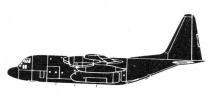Incident Overview

Description
The aircraft had departed from Cagliari, Italy, with 49 passengers and 4 crew members on a charter flight to Munich. At the destination airport, an instrument landing system (ILS) approach to runway 26L was planned. During the approach, when the landing gear was deployed, only the two main landing gear reached the extended and locked position. A red light and an audible warning (GEAR DISAGREE) indicated to the pilots that the nose gear had not achieved the same status as the main landing gear. The approach was aborted, and the landing gear was retracted. In the retracted position, no abnormalities were observed. A renewed attempt to deploy the landing gear using the standard procedure while in a holding pattern again resulted in the nose gear malfunction. Several attempts to extend all landing gear into a locked position using the emergency procedure were also unsuccessful. During a fly-by past the control tower, it was observed that only the landing gear doors for the nose gear compartment were open. There was no visible sign of the nose gear itself, its wheel, or the tire. After exhausting all options, preparations were made for a landing with the nose gear retracted. At 16:46, the main landing gear wheels touched down on the runway at an indicated speed of 120 knots. At 80 knots, the nose of the fuselage made contact with the ground. The aircraft came to a stop on the centerline after sliding approximately 200 meters down the runway. Conclusions The causes of this accident were: – The AMM (Aircraft Maintenance Manual) lacked instructions regarding an important installation dimension for the installation of the NLG (Nose Landing Gear) and the Uplock Assembly. – In the retracted and locked position of the NLG, the clearance between the hook and the roller in the locking mechanism was too small. – In the retracted and unlocked position of the NLG, the locking hook did not fully release the roller. – Due to stiffness of the roller, the NLG was held in the retracted and unlocked position. Systemic factors contributing to the causes included: – The clearance between the UPLOCK PIN and the LATCH in the retracted and locked position was not checked or adjusted after the NLG installation due to missing instructions in the maintenance documentation. – During the overhaul of the NLG, a change in the work instructions for installing the UPLOCK PIN was not implemented. – The rotational movement of the UPLOCK PIN was not checked or adjusted after the NLG installation due to missing instructions in the maintenance documentation.
Primary Cause
Missing instructions regarding the installation dimension of the NLG and the Uplock Assembly, specifically regarding clearance between the hook and the roller. Lack of proper checks and adjustments on the locking mechanism of the nose gear.Missing instructions regarding the installation dimension of the NLG and the Uplock Assembly, specifically regarding clearance between the hook and the roller. Lack of proper checks and adjustments on the locking mechanism of the nose gear.Share on:





